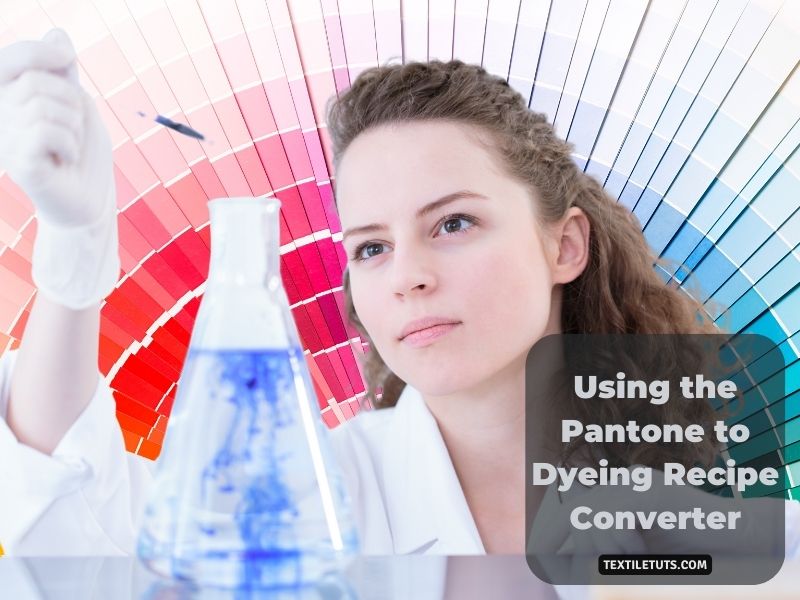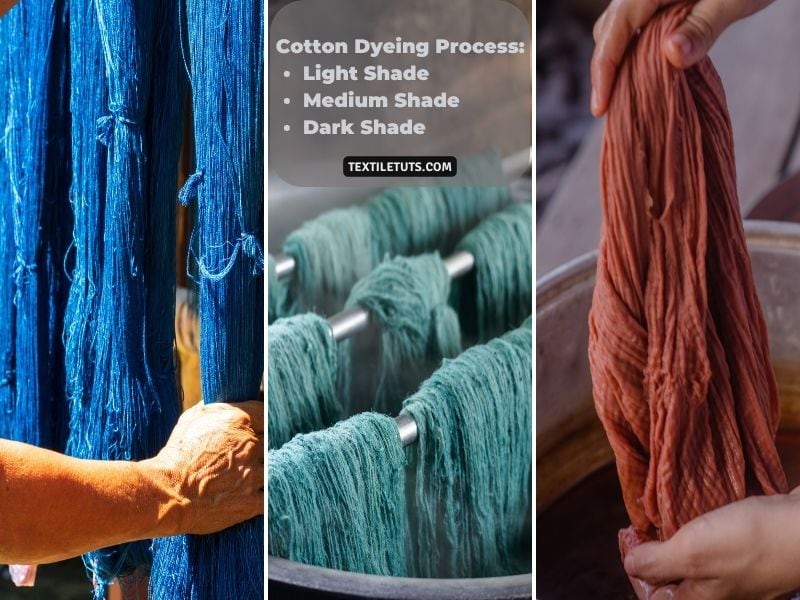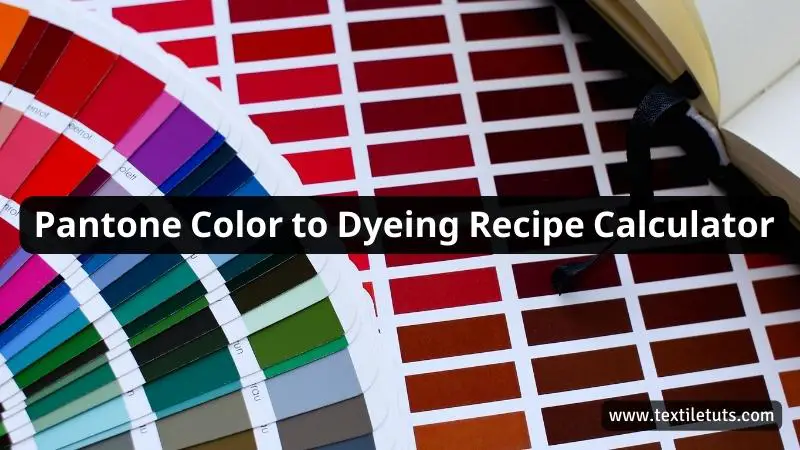Convert Pantone Color to Dyeing Recipes for Cotton Textiles
Calculator for Converting a Pantone No. to Dyeing Recipe
Calculation of :
Total Liquor in mililiters:
Amount of Salt in gm:
Amount of Soda in gm:
Amount of Caustic in gm:
If you don’t have a scale that can measure decimal values after zero, make 0.1% stock solution of that dye first. Meaning, mix 0.1g of that dye in 100 mL of water.
Then use the following calculator to measure how much dye in mL you have to take.
How to Use the Pantone to Dyeing Recipe Converter

First, you need to select the Pantone No. you wish to dye. We have already listed the Pantone numbers and their corresponding H&M color codes in another article. Note the Pantone and the respective Depth (%).
Now you have to do the following:
- Weight your fiber/fabric/yarn/garment in grams.
- Select your preferred liquor ratio. Liquor ratio is amount of water required per one unit weight of the substrate. For example, a liquor ratio of 10 means that for 1 gm of the substrate, you will require 10 milliliters of water.
- If you are dyeing at home, we recommend keeping your liquor ratio to at least 20 for an even dyeing. For lab dips, you can go for a lower liquor ratio.
- Once you input these values, our Pantone to dyeing recipe calculator will give you the required amount of dyes, salt, and alkali in grams.
- Check self shades of the suggested dyes, and use any dye that’s equivalent to that. Adjust the recipe if you want. For example, if you want a more greenish tone, increase the percentage of Yellow and Blue by a small margin.
It’s always a good idea to dye a test fabric first.
Cotton Dyeing Process for Dyeing Light, Medium, and Dark Shades at Home

First, you need to categorize the Pantone shade you are dyeing. The Pantone shades can be categorized as –
| Depth (%) | Category |
|---|---|
| Less than 0.5% | Light |
| From 0.5% to 1.5% | Medium |
| From 1.5% to 3.0% | Dark |
| From 3.0% to above | Extra Dark |
After finding the category, you can use the relevant process below.
Dyeing a Light Shade Using the Pantone Recipe at Home
- Pre-soak your fiber/fabric/yarn/garment.
- Pour the required amount of water into a bucket. If you can pre-heat this water slightly, that would be better for color mixing. Because sometimes the dyes tend to be cluttered.
- Now, add the prescribed amount of dye and auxiliaries. Mix it using a stick or stirrer.
- Put the pre-soaked fiber/fabric/yarn/garment slowly into your mix.
- Now, put the bucket in the stove and run the bath at boiling temperature for 10 minutes.
- Using the stick or stirrer take out the fabric and check the hue. If it’s alright, then add the alkalis, i.e., soda and/or caustic.
- Run at boiling temperature for at least 15 minutes. Don’t forget to stir the fabric in-between.
- Take out the fabric and rinse it thoroughly using normal/cool water.
- Wash and dry it using your regular setting. Just don’t put any other substrate with it.
Dyeing a Medium Shade Using the Pantone Recipe at Home
All the processes from 1 to 6 are the same. Just run the dyebath at a boiling temperature for 30 minutes. Wash and dry as usual.
Dyeing a Dark or Extra-Dark Shade Using the Pantone Recipe at Home
All the processes from 1 to 6 are the same. Just run the dyebath at a boiling temperature for 60 minutes. Wash and dry as usual.

